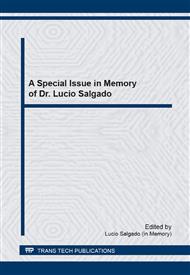p.137
p.143
p.149
p.155
p.161
p.167
p.172
p.178
p.184
Improving the Carbon Steel Surface Treatment Process
Abstract:
Carbon steel is widely employed in the production of parts and machinery which supply the most diverse industrial sectors, such as the production of domestic appliances and cars. However, it presents low chemical resistance, being necessary the superficial treatment with anti-corrosion substances. Most conventional surface treatments present harmful components to the environment and to life in general, as for instance, nickel, which is used in the phosphatization processes. More recently, researchers have been pointing to surface treatments which employ nanoceramics as potential substitutes to phosphatization. This study aims to develop a nanoceramic treatment to the carbon steel 1008, based on self-assembling molecule (SAM) and titanium dioxide. Carbon steel samples were SAM treated and then immersed in a solution containing TiO2. A chemometric study was developed to evaluate the best treatment conditions, using the software Designer Expert. For the electrochemical characterization, electrochemical impedance spectroscopy (EIS) tests were carried out. Results revealed that the SAM + TiO2 coating presents higher resistance to polarization than the samples treated with zinc phosphate, in a 0.01 mol L-1 sulphur acid medium.
Info:
Periodical:
Pages:
161-166
Citation:
Online since:
September 2014
Keywords:
Price:
Сopyright:
© 2015 Trans Tech Publications Ltd. All Rights Reserved
Share:
Citation:


